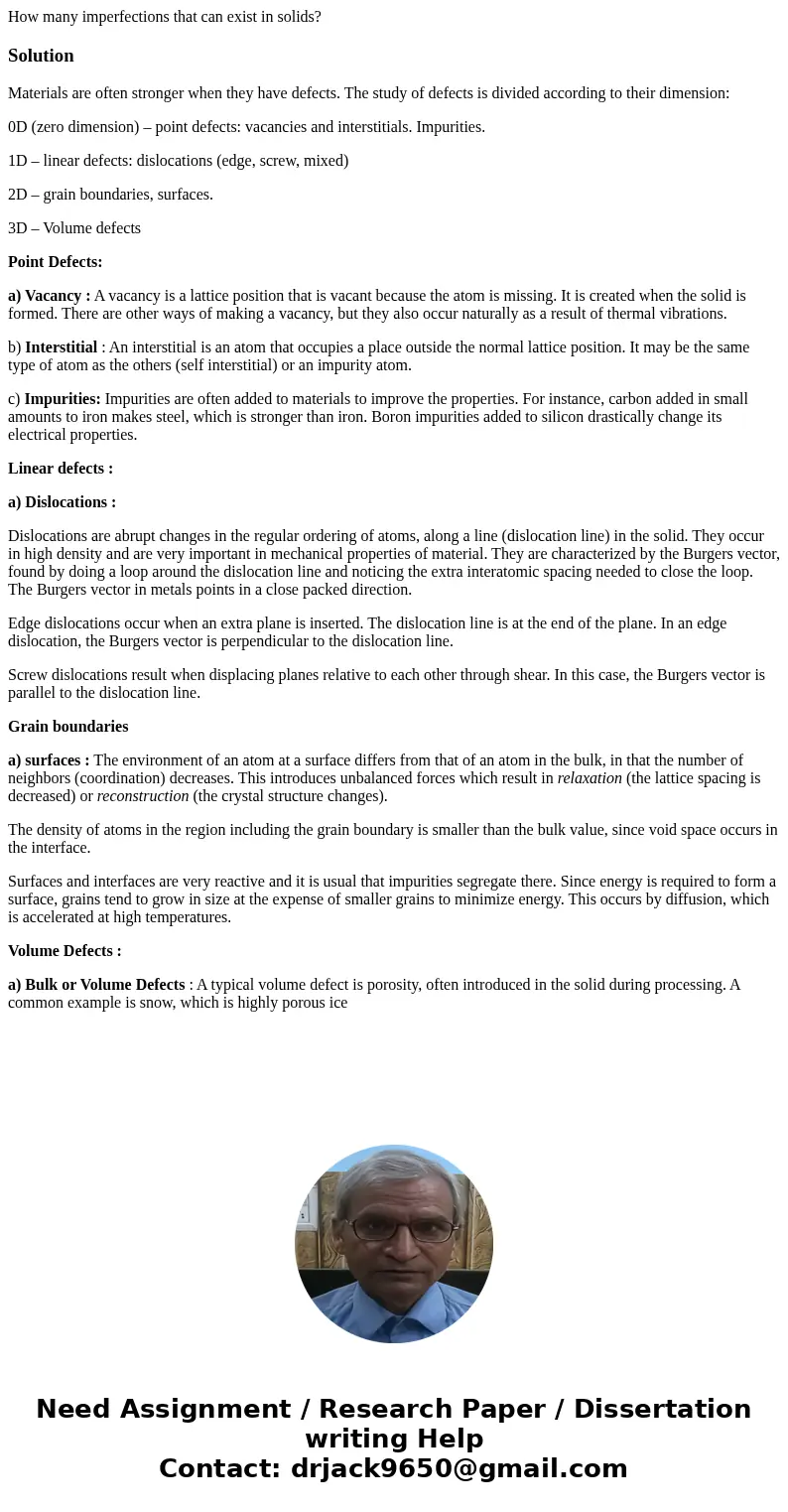How many imperfections that can exist in solidsSolutionMater
Solution
Materials are often stronger when they have defects. The study of defects is divided according to their dimension:
0D (zero dimension) – point defects: vacancies and interstitials. Impurities.
1D – linear defects: dislocations (edge, screw, mixed)
2D – grain boundaries, surfaces.
3D – Volume defects
Point Defects:
a) Vacancy : A vacancy is a lattice position that is vacant because the atom is missing. It is created when the solid is formed. There are other ways of making a vacancy, but they also occur naturally as a result of thermal vibrations.
b) Interstitial : An interstitial is an atom that occupies a place outside the normal lattice position. It may be the same type of atom as the others (self interstitial) or an impurity atom.
c) Impurities: Impurities are often added to materials to improve the properties. For instance, carbon added in small amounts to iron makes steel, which is stronger than iron. Boron impurities added to silicon drastically change its electrical properties.
Linear defects :
a) Dislocations :
Dislocations are abrupt changes in the regular ordering of atoms, along a line (dislocation line) in the solid. They occur in high density and are very important in mechanical properties of material. They are characterized by the Burgers vector, found by doing a loop around the dislocation line and noticing the extra interatomic spacing needed to close the loop. The Burgers vector in metals points in a close packed direction.
Edge dislocations occur when an extra plane is inserted. The dislocation line is at the end of the plane. In an edge dislocation, the Burgers vector is perpendicular to the dislocation line.
Screw dislocations result when displacing planes relative to each other through shear. In this case, the Burgers vector is parallel to the dislocation line.
Grain boundaries
a) surfaces : The environment of an atom at a surface differs from that of an atom in the bulk, in that the number of neighbors (coordination) decreases. This introduces unbalanced forces which result in relaxation (the lattice spacing is decreased) or reconstruction (the crystal structure changes).
The density of atoms in the region including the grain boundary is smaller than the bulk value, since void space occurs in the interface.
Surfaces and interfaces are very reactive and it is usual that impurities segregate there. Since energy is required to form a surface, grains tend to grow in size at the expense of smaller grains to minimize energy. This occurs by diffusion, which is accelerated at high temperatures.
Volume Defects :
a) Bulk or Volume Defects : A typical volume defect is porosity, often introduced in the solid during processing. A common example is snow, which is highly porous ice

 Homework Sourse
Homework Sourse